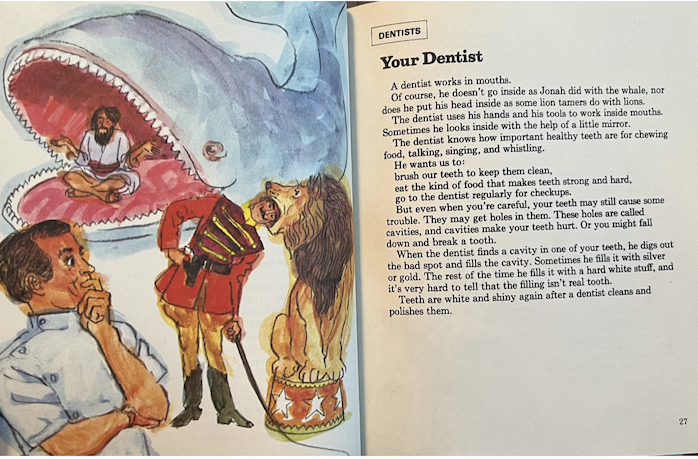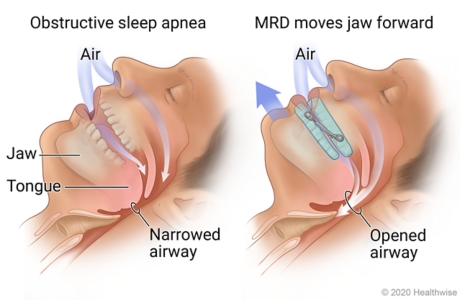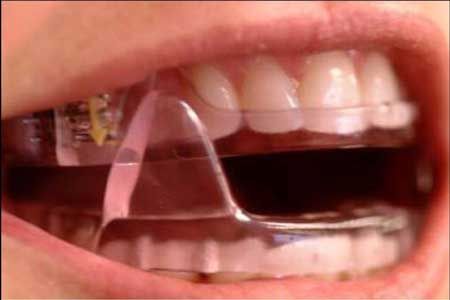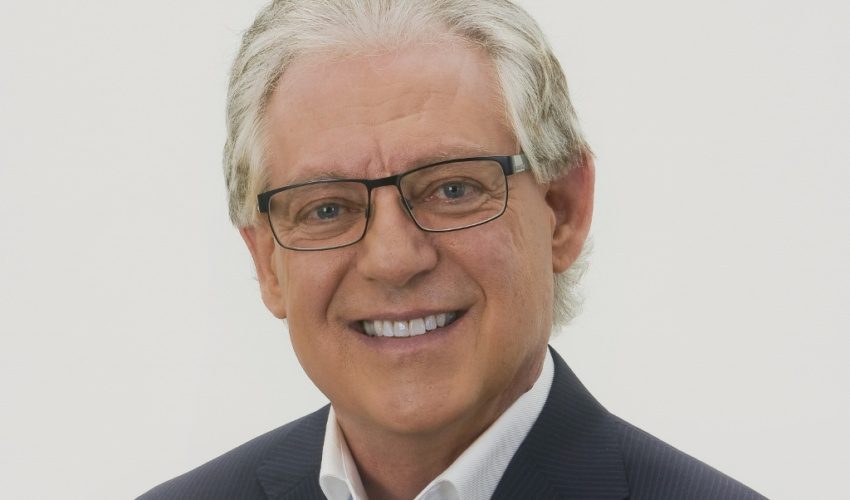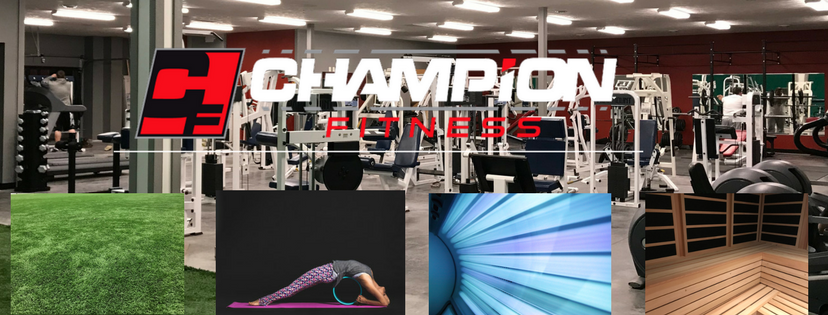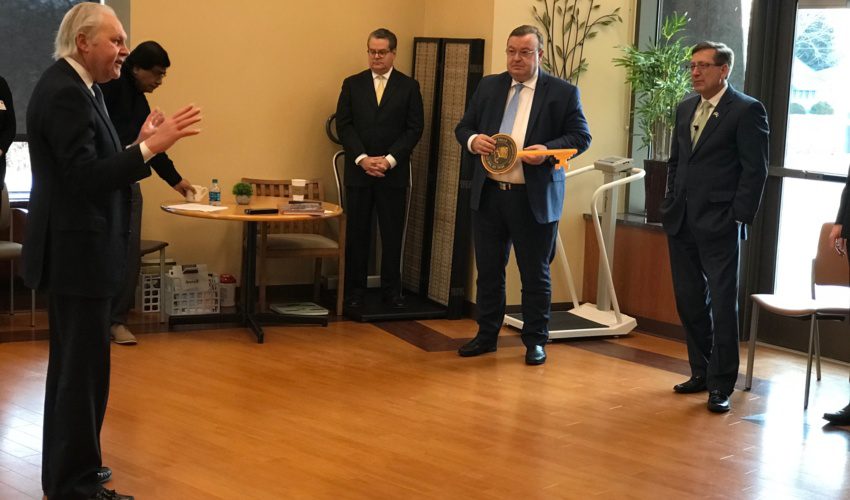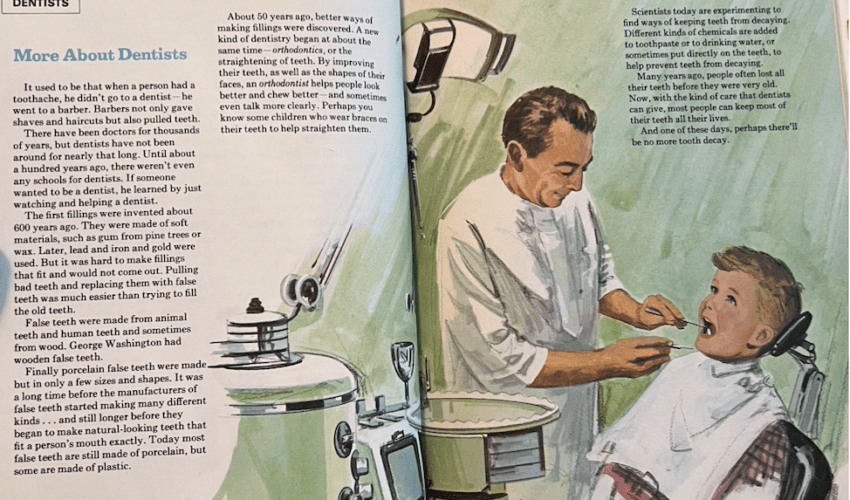Dentistry then and now — evolving to address sleep apnea
Aug. 23, 2022
This paid piece is sponsored by Siouxland Oral & Maxillofacial Surgery.
“It used to be when a person had a toothache, he didn’t go to a dentist. He went to a barber. Barbers not only gave shaves and haircuts but also pulled teeth.”
That’s the opening paragraph of this story from Children’s Britannia – which dates back 52 years and shares the history of dentistry from the first fillings made of gum from pine trees or wax to the evolution of false teeth and orthodontics.
“Scientists today are experimenting to find ways of keeping teeth from decaying,” it said, mentioning “different kinds of chemicals are added to toothpaste or drinking water.”
The dental world has come a long way in the past five decades. While its mission of care still rings true, the dental world continues to evolve in a great variety of ways.
Today, we’ll look more closely at how our field is diagnosing the condition known as obstructive sleep apnea, or OSA.
People breathe either through their mouth or their nose or sometimes both. Many people cannot sleep well because there is an obstructed flow of air into their lungs. This obstruction can happen at multiple different levels: your nose, the back of your upper throat, your tongue, below your tongue, in your neck or even your trachea, which can be stenosed, or narrowed.
Basically, what happens is the tissue in these areas collapses and thus closes the airway while you sleep. This collapse remains until you wake up a bit and your muscle tone opens the areas in question up again. Other troublesome reasons can be attributed to anatomical obstructions such as a deviated septum, large tonsils, large turbinates, which are the bones and tissue in the back of your nose, or a lower jaw that is too small.
As these obstructions occur, you are unable get a good night’s sleep and subsequently are tired the next day. Typically, this can lead to weight gain and the unhealthy development of high blood pressure. The specific type of high blood pressure that you could develop is called pulmonary hypertension, and it is notoriously hard to control verses traditional hypertension.
So where does dentistry fit in the world of sleep apnea? Your dentist might be the first one to realize that you might be at risk for OSA and talk to you about a home sleep apnea test. This is a good screening tool to determine if you need an overnight polysomnogram that is performed at the hospital.
If you do have sleep apnea, then your dentist may recommend the addition of a mandibular repositioning appliance that functions a lot like a night guard. This appliance also will move your lower jaw forward a bit, which also moves the tongue forward and thus opens up the airway as you sleep.
It won’t do a whole lot of good, however, if your obstruction is caused by enlarged tonsils, enlarged turbinates or a deviated septum. This is why your dentist will do an initial exam to find out if you may have other reasons for this nagging problem. One thing you have no control over, however, is frank decrease in muscle tone because of age. When you are young, the body often can compensate for these changes. Nevertheless, as you age into your late 30s, you do lose muscle tone and, therefore, can start to develop sleep apnea.
A generalized rule of thumb to help you along is that if you have OSA, there is a good chance that you can get better by doing one thing: lose 10 pounds or 10 percent of your body weight, whichever is greater. That, of course, is great to propose but oftentimes hard to do — and even more difficult to do once you are past age 50. Another strategy you can implement is to practice good sleeping practices. That means getting to bed early and consistently every night, making every attempt to get a steady night’s sleep for roughly eight hours.
So the take-home message is that if you think you are overweight and don’t sleep well, there a couple of things you can do: losing some weight and getting to sleep at the same time consistently and early. After that, you should schedule a consult with an ENT surgeon and your dentist to find out where the problem is. ENT can help you if the obstruction is in your nose, tongue or the tonsils. Your dentist, meanwhile, can design a sleep appliance for you in order to move your lower jaw forward to open up your airway.
The last stop is oral and maxillofacial surgery, where we can lengthen the upper and lower jaws and subsequently pull the whole lower face forward and thus open up the airway. Naturally, not many people need to go that far surgically, but since we started with a story, we will end with one.
Over 10 years ago, there was a patient who came to us with sleep apnea complete with very with loud snoring. Nothing he tried seemed to improve matters — and he tried almost everything in this article! So the last choice for him was the maxillomandibular advancement — pulling the upper and lower jaws forward. This was really important because he was getting married, but his loud snoring and profound OSA made it so he could not sleep in the same room as his future wife. This, by the way, happens to more people than you might think. For our patient, however, we successfully performed his advancement surgery, eliminated the OSA and got him all set for his big day — the rest is history.
And, if you were inspired by the story of Children’s Britannia, know that the editors put out this series of 16 books that stood the test of time and looked into the future. Search the internet, and you likely can find a set for your kids or grandkids!
Please look for our future monthly articles covering a variety of dental and surgical topics.
To learn more about Siouxland Oral & Maxillofacial Surgery, go to siouxlandoralsurgery.com.


